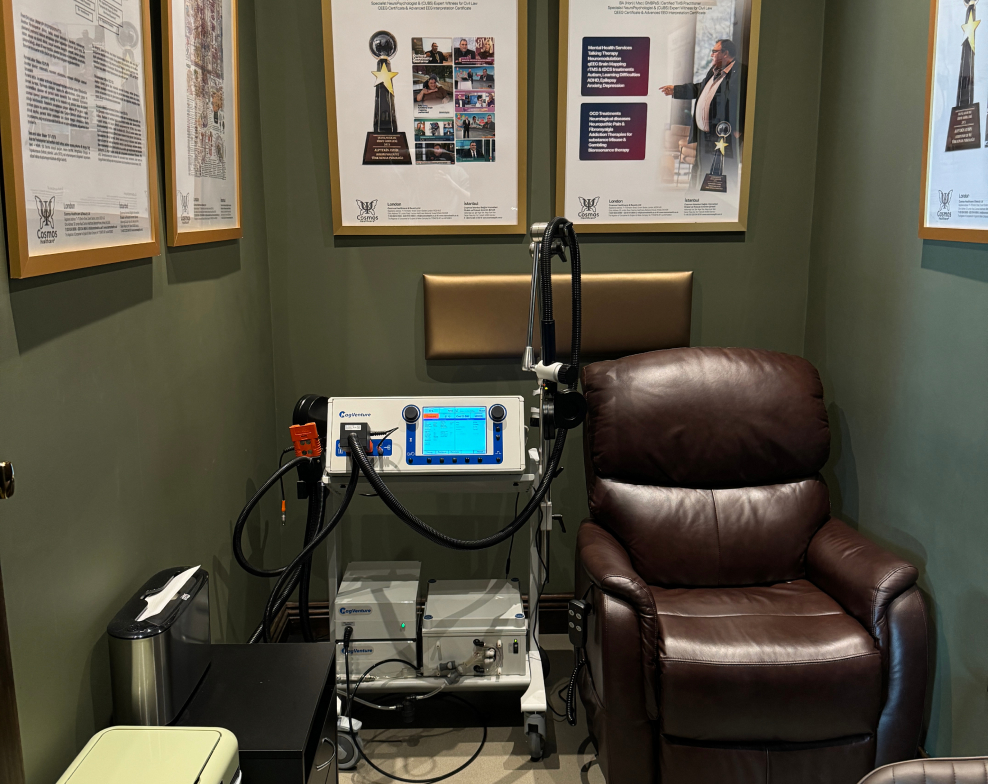

The ongoing evolution of Alzheimer’s disease treatments benefits from combining advanced neuroimaging methods with personalized neuromodulation approaches to create opportunities for early diagnosis and treatment. The QPAN (Quantitative Personalized Adaptive Neuromodulation) model together with the Neuromap algorithm demonstrates this innovative method through the application of quantitative electroencephalography (qEEG) to generate personalized functional brain maps. These biomarker maps enable early detection of Alzheimer’s neural changes and support targeted treatment via transcranial direct current stimulation (tDCS).
Quantitative electroencephalography (qEEG) employs non-invasive techniques to detect brain electrical activity and reveals comprehensive information about neural oscillations and connectivity patterns. The Neuromap algorithm uses artificial intelligence to detect early-stage Alzheimer’s disease by analyzing brain pattern deviations. Timely therapeutic interventions can prevent further disease advancement through early detection.
The QPAN model directs personalized tDCS protocol implementation after detecting early disease indicators. tDCS represents a non-invasive brain stimulation approach which utilizes a mild electrical current to alter the functioning of neurons. Recent research shows that tDCS can improve cognitive functions or maintain stability in patients with mild to moderate Alzheimer’s disease. A systematic review and meta-analysis found that tDCS improves cognitive functioning in patients with mild cognitive impairment and those in the early to mid-stages of Alzheimer’s disease.
The QPAN model incorporates personalization to customize tDCS protocols according to the specific neural profile identified through an individual’s qEEG-derived brain map. The targeted approach boosts therapeutic effectiveness by focusing on the neural circuits disrupted during Alzheimer’s disease’s early stages.
Recent research has examined whether home-based tDCS interventions can be practically implemented. A randomized double-blind cross-over study protocol investigates the feasibility of home-based self-application of tDCS for elderly patients experiencing cognitive decline to demonstrate accessible treatment solutions.
The Neuromap algorithm merges qEEG-based functional brain mapping with AI-driven analysis to detect Alzheimer’s disease at its early stages. Personalized tDCS interventions guided by the QPAN model paired with this approach could potentially prevent or slow Alzheimer’s progression through a novel personalized therapy for at-risk individuals.
The treatment of Alzheimer’s disease (AD) has progressed through the combination of advanced neuroimaging and personalized neuromodulation techniques which have created new opportunities for early detection and intervention. The QPAN model together with the Neuromap algorithm demonstrates this forward-thinking technique through the application of quantitative electroencephalography (qEEG) to generate individual functional brain maps. These brain maps function as biomarkers to detect Alzheimer’s-related neural changes early which enables precise treatment using transcranial direct current stimulation (tDCS).
qEEG operates as a non-invasive brain measurement technique that reveals detailed information about neural oscillations and connectivity patterns by analyzing brain electrical activity. The Neuromap algorithm uses artificial intelligence to detect early-stage Alzheimer’s disease by analyzing pattern deviations in neural data. Early detection plays a critical role because it enables healthcare providers to implement therapeutic interventions at key moments to slow down disease progression.
The QPAN model provides direction for applying personalized tDCS protocols after early signs are recognized. The non-invasive tDCS technique involves applying a mild electrical current to modulate brain neuron activity. Recent research indicates that tDCS may help either improve or maintain cognitive abilities in individuals suffering from mild to moderate Alzheimer’s Disease. A systematic review combined with meta-analysis findings demonstrated that tDCS treatment improves cognitive abilities in people with mild cognitive impairment and those who have early to mid-stage Alzheimer’s disease. citeturn0search10
The QPAN model uses personalization to adjust tDCS protocols according to each individual’s distinct brain profile which is mapped out through their qEEG. Focusing on specific neural circuits impacted during the early stages of Alzheimer’s disease enhances the chance for therapeutic success through this targeted approach.
Recent research has examined whether tDCS interventions can be successfully conducted at home. This randomized double-blind cross-over study protocol seeks to validate self-administration of tDCS treatments by elderly patients experiencing cognitive decline at home while demonstrating accessible treatment possibilities.
The combination of qEEG-based brain mapping with AI analysis using the Neuromap algorithm allows for the early detection of Alzheimer’s disease. The combination of personalized tDCS interventions based on the QPAN model with new therapeutic strategies demonstrates potential for preventing Alzheimer’s progression and offers a customized treatment for at-risk individuals.
